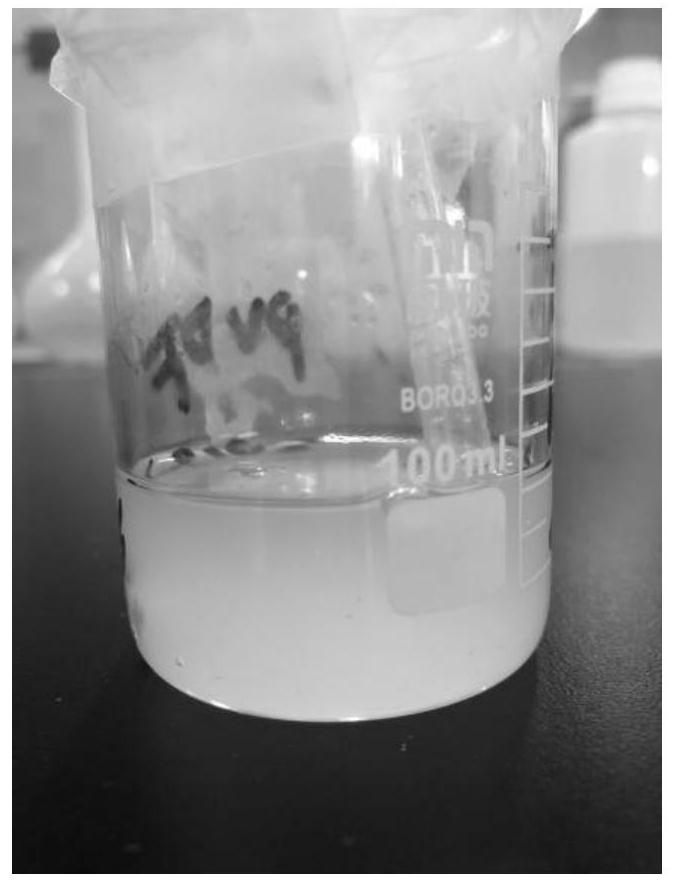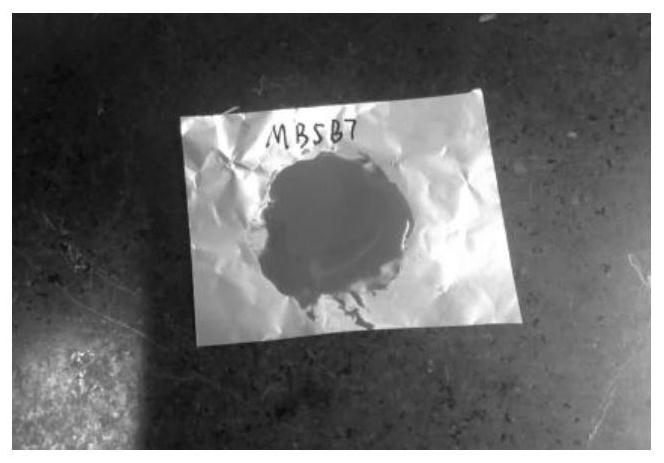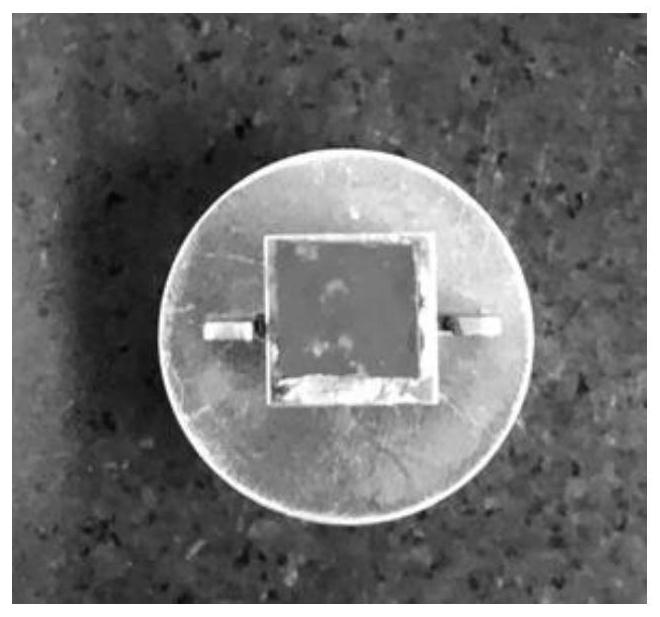Treatment method of lithium ion battery material powder sample section
A lithium-ion battery and processing method technology, which is applied in the field of processing the cross-section of lithium-ion battery material powder samples, can solve the problems of low utilization efficiency of G1 glue, uneven dispersion of powder particles, and changes in sample morphology, etc., to achieve economical sample preparation The effect of time, high sample utilization rate, and complete cross-sectional shape information
- Summary
- Abstract
- Description
- Claims
- Application Information
AI Technical Summary
Problems solved by technology
Method used
Image
Examples
Embodiment 1
[0030] Argon Ion Beam Section Cutting of Ternary Precursor Materials
[0031] S1. Weigh 2.0g of PVDF powder into a clean beaker, add 38.0g of NMP solvent, and stir for 4 hours until translucent viscous glue is obtained, such as figure 1 shown;
[0032] S2. Cut off an appropriate amount of copper foil, use a dropper to draw about 0.5mL of glue solution and place it on the surface of the copper foil, add 1.75g of the precursor powder sample to be tested, mix the powder evenly in the PVDF glue with a toothpick, and use a spatula to evenly mix the glue Coated on the surface of copper foil, the coating thickness is 50μm, such as figure 2 shown;
[0033] S3. Put the coated copper foil in an oven at 90°C. After 30 minutes, after the adhesive layer is volatilized and dry, cut a 0.5×0.5cm copper foil with a uniform mixture, and solidify the powder sample from the copper foil. Remove it from the foil, and fix it on the baffle used for argon ion beam cutting through the sample load...
Embodiment 2
[0035] Argon Ion Beam Section Cutting of Ternary Precursor Materials
[0036] S1. Weigh 2.0g of PVDF powder into a clean beaker, add 32.0g of NMP solvent, and stir for 6 hours until translucent viscous glue is obtained;
[0037] S2. Cut off an appropriate amount of copper foil, use a dropper to absorb about 0.5mL of glue and place it on the surface of the copper foil, add 2.25g of the precursor powder sample to be tested, mix the powder evenly in the PVDF glue with a toothpick, and use a spatula to evenly mix the glue Coated on the surface of copper foil, the coating thickness is 10μm;
[0038] S3. Put the coated copper foil in an oven at 85°C. After 30 minutes, after the adhesive layer has evaporated and dried, cut a 0.5×0.5cm copper foil with a uniform mixture, and remove the solidified block of the powder sample from the copper foil. Remove it from the foil, and fix it on the baffle used for argon ion beam cutting through the sample loader; put the prepared sample into the...
Embodiment 3
[0040] Argon Ion Beam Section Cutting of Ternary Precursor Materials
[0041] S1. Weigh 2.0g of PVDF powder into a clean beaker, add 38.0g of NMP solvent, and stir for 4 hours until translucent viscous glue is obtained;
[0042] S2. Cut off an appropriate amount of copper foil, use a dropper to draw about 0.5mL of glue solution and place it on the surface of the copper foil, add 2g of the precursor powder sample to be tested, mix the powder evenly in the PVDF glue with a toothpick, and spread the mixed glue evenly with a spatula Clothed on the surface of copper foil, the coating thickness is 100μm;
[0043]S3. Place the coated copper foil in an oven at 95°C. After 40 minutes, after the adhesive layer has evaporated and dried, cut a 0.5×0.5cm copper foil with a uniform mixture, and remove the solidified block of the powder sample from the copper foil. Remove it from the foil, and fix it on the baffle used for argon ion beam cutting through the sample loader; put the prepared s...
PUM
| Property | Measurement | Unit |
|---|---|---|
| Thickness | aaaaa | aaaaa |
| Thickness | aaaaa | aaaaa |
Abstract
Description
Claims
Application Information
 Login to View More
Login to View More - R&D
- Intellectual Property
- Life Sciences
- Materials
- Tech Scout
- Unparalleled Data Quality
- Higher Quality Content
- 60% Fewer Hallucinations
Browse by: Latest US Patents, China's latest patents, Technical Efficacy Thesaurus, Application Domain, Technology Topic, Popular Technical Reports.
© 2025 PatSnap. All rights reserved.Legal|Privacy policy|Modern Slavery Act Transparency Statement|Sitemap|About US| Contact US: help@patsnap.com



